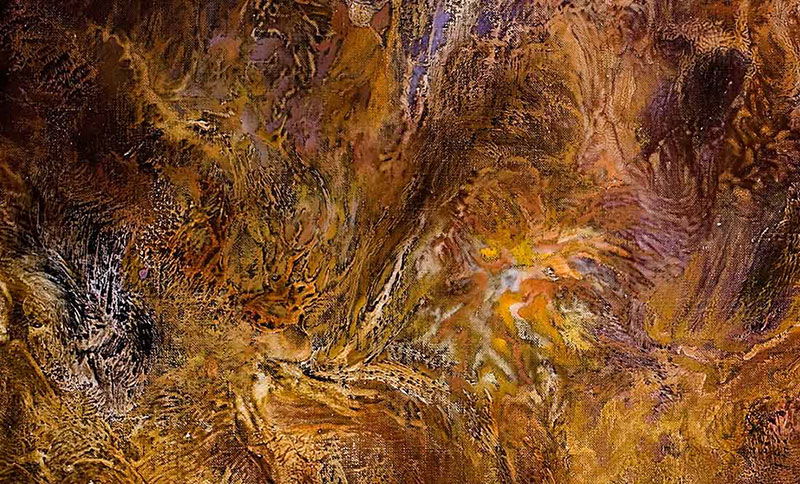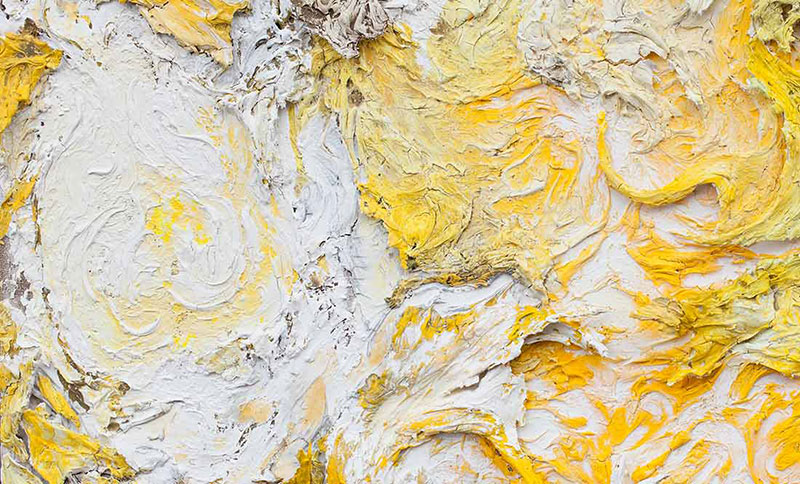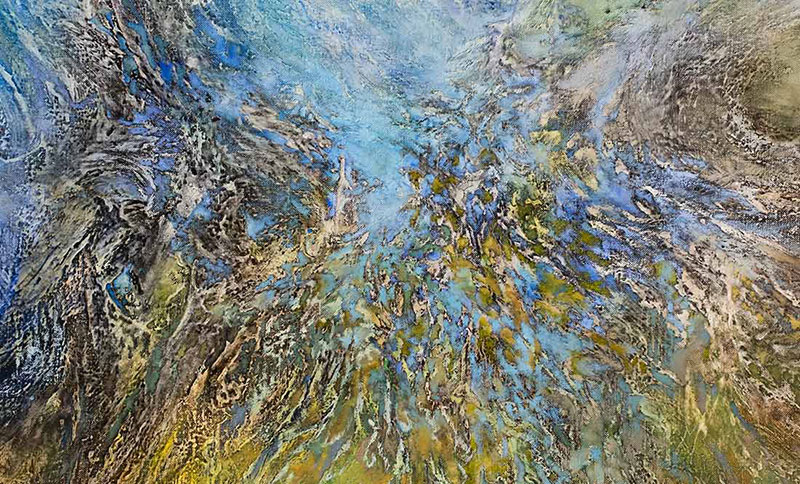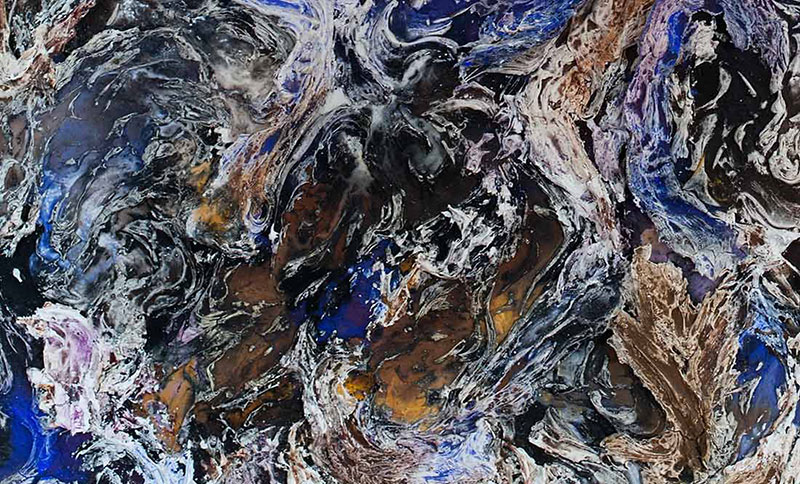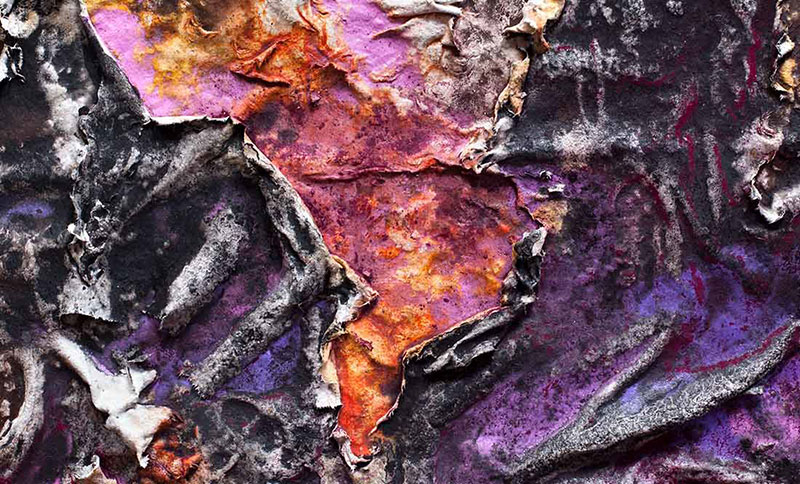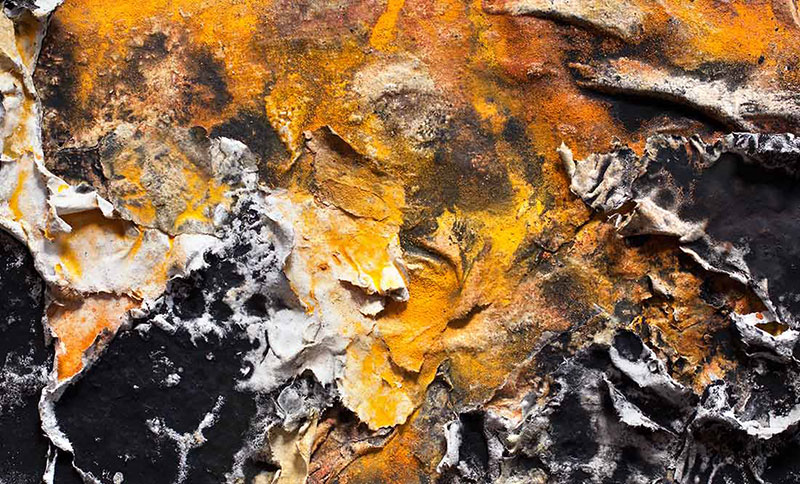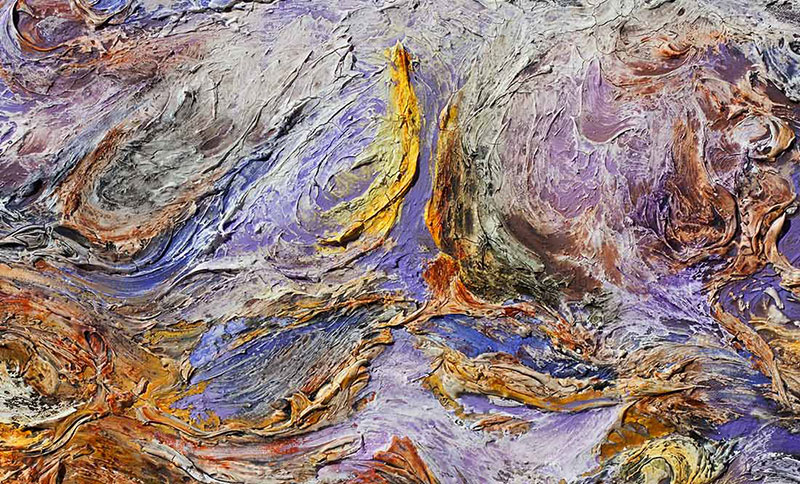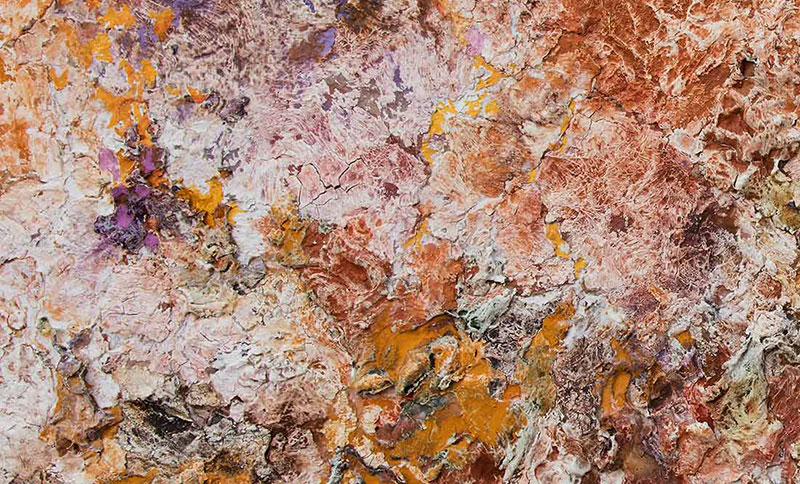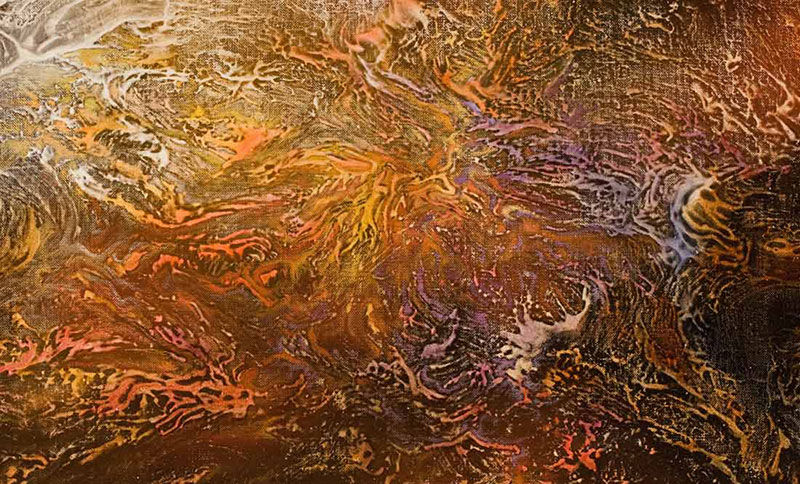FOREWORD
The nature of Ruggero Vanni’s paintings can be likened to the “coralline” algae encrusting deep-sea rock formations. These slow-growing patches of color expand by millimeters every year, adding layer upon layer of “paint” to their underlying structure. The end of this painstaking process unfolds a singular, gem-like tapestry for the beholder. In the eyes of the diver, the algae’s hues adhere not only to the forms on which they rest (grey boulders or jagged edges), but the shimmering refraction conveyed by the medium of the ocean’s depths. ...more
The nature of Ruggero Vanni’s paintings can be likened to the “coralline” algae encrusting deep-sea rock formations. These slow-growing patches of color expand by millimeters every year, adding layer upon layer of “paint” to their underlying structure. The end of this painstaking process unfolds a singular, gem-like tapestry for the beholder. In the eyes of the diver, the algae’s hues adhere not only to the forms on which they rest (grey boulders or jagged edges), but the shimmering refraction conveyed by the medium of the ocean’s depths.
Like the deep-sea diver, viewers must immerse themselves in Vanni’s paintings. To enter the composition, any nook or cranny of space will do, for it has no intended center; that is for the viewer to find. Let yourself be carried away by the gestural current of the work: inverted spirals, light playing on a fragment… These paintings are not chaotic. Structure gracefully develops before the considerate observer, unlike other abstract art that bears down upon them in an immediate, violent confrontation. They can invoke a sense of disquiet, however, especially in the points of the canvas where depth is emphasized. It is the same disquiet that comes in seeking new reaches to the universe, in sounding the ocean’s unexplored depths. Swaying to these currents, one engages a process of self questioning - an intimate meditative practice.
We can see four phases of Vanni’s career. The first is the “fractal” period (1982-1992), involving two-dimensional patterns and refractions of color across the surface of the canvas. The second is the “gestural” period (1992-2011), where color is added onto intended plaster forms, and the unintended cracks produced in them by time (like in the canvases of the old masters). The third is sculptural (2011-2021), where caked plaster separates from the canvas like the bas relief of an ancient roman sarcophagus, or curves and folds are shaped into a work on paper in the molding process. Vanni’s latest period (2021-Present) has achieved a kind of synthesis; it is an effervescent sedimentation of color that does not conform to fractal pattern, to a single gesture. It builds up form without breaking away from the canvas. Just as the coral’s crust becomes enmeshed in a rock’s surface, the viewer is called once again to meld with the questions and revelations presenting themselves in Vanni’s work.
BIO
Ruggero Vanni (b. 1958) is an Italian and American abstract painter. Born in Paris, he grew up in Rome, where he attended the Istituto d’Arte. In 1979 he received a scholarship to study painting at The Cooper Union School of Art in New York, where he has established himself up to present. His first solo show was at Il Ponte Gallery, Rome in 1986, and he has continued to exhibit nationally and internationally over the last forty years.
Vanni’s work has drawn inspiration from the tumultuous activity of Manhattan since his arrival in the late 70’s, in the wake of Abstract Expressionism. ...more
Ruggero Vanni (b. 1958) is an Italian and American abstract painter. Born in Paris, he grew up in Rome, where he attended the Istituto d’Arte. In 1979 he received a scholarship to study painting at The Cooper Union School of Art in New York, where he has established himself up to present. His first solo show was at Il Ponte Gallery, Rome in 1986, and he has continued to exhibit nationally and internationally over the last forty years.
Vanni’s work has drawn inspiration from the tumultuous activity of Manhattan since his arrival in the late 70’s, in the wake of Abstract Expressionism. He found in that movement the perfect complement to his interest in late Renaissance Venetian painting.
In the summer, he nourishes his sensibility from the seascape around the Greek island of Kythira, where he has a studio. Observing these shifting forces, he tries to distinguish forms, orders, and patterns that will emerge in his work.
Public collections include: Pinacoteca of Aosta, Italy; Irving Cancer Center, Columbia University, NY;
Yale Eye Center, Yale University, New Haven, CT; Camba Housing Ventures, Brooklyn, NY.
One Person Exhibitions
2020 Color-Matters, Arco Gallery and
Anderson Contemporary, New York, NY
2020 Arco Gallery, New York, NY
2014 Arco Gallery, New York, NY
2010 Village West Gallery, New York, NY
2009 Space Green, New York, NY (Cat.)
2007 Chiostro Boccarini, Amelia, Italy
1989 Galleria Il Ponte, Rome, Italy
For Art Sake Gallery, Claremont, CA
1987 Galleria Il Ponte, Forum, Zurich, Switzerland
1986 Galleria Il Ponte, Rome, Italy
1983 Galleria Quattrocento, New York, NY
Group Exhibitions
2019 Arco Gallery, 14C Art Fair, Jersey City, NJ
2017 The Four Seasons, Village West Gallery,
Jersey City, NJ
2016 Arco Gallery, Art on Paper, New York, NY
2014 Petits Formats and Works on Paper,
Arco Gallery, New York, NY
Arco Gallery, Aqua Art Fair, Miami, FL
Paper Reveries, Shirley Fiterman Art Center,
CUNY, New York, NY
2010 Play Me – I’m Yours, Sing For Hope,
New York, NY (Cat.)
1999 4th Annual Loft Pioneer Show, The Puffin Room,
New York, NY
1997 New York – New Generation curated by Barbara
Rose, Palazzo Penna, Perugia, Italy (Cat.)
1996 Kouros Gallery, New York, NY
1992 Grace Gallery, Brooklyn, NY
York College of Art, Jamaica, NY (Cat.)
Galleria Il Ponte, Chicago International Art Expo,
Chicago, IL
1991 Charles Cowles Gallery, New York, NY
Galleria Il Ponte, Chicago International Art Expo,
Chicago, IL
1990 Galleria Il Ponte, Chicago International Art Expo,
Chicago, IL
1989 Galleria Il Ponte, Chicago International Art Expo,
Chicago, IL
Under 35, Campo Boario, Rome, Italy
1988 Cromantica, Tour Fromage Art Center, Aosta,
Italy (Cat.)
Galleria Il Ponte, Chicago International Art Expo,
Chicago, IL
Pittura-Pittura, Galleria Il Ponte, Rome, Italy
Gallery’s Artists Summer Exhibition, Galleria
Il Ponte, Rome, Italy
1987 Galleria Il Ponte, Chicago International Art Expo,
Chicago, IL
Gallery’s Artists Summer Exhibition, Galleria
Il Ponte, Rome, Italy
1982 Houghton Gallery, Cooper Union, New York, NY
STATEMENT
My works allude to natural phenomena, in a raw state, devoid of the limiting constrictions of literal representation. Nature is there, as a landscape, a view looking up in the air, or plunging down underwater. Imagery kept on the edge of recognition, so the final association is created in the mind.
Contrasts of matter, color, light, are created to provoke emotional responses. In the large paintings the atmospheric composition is built by raised brushstrokes shattered and reassembled to reveal an underlying struggle. In the smaller works paper is cast tumultuously as a counterpoint to its inherent frailness. ...more
My works allude to natural phenomena, in a raw state, devoid of the limiting constrictions of literal representation. Nature is there, as a landscape, a view looking up in the air, or plunging down underwater. Imagery kept on the edge of recognition, so the final association is created in the mind.
Contrasts of matter, color, light, are created to provoke emotional responses. In the large paintings the atmospheric composition is built by raised brushstrokes shattered and reassembled to reveal an underlying struggle. In the smaller works paper is cast tumultuously as a counterpoint to its inherent frailness.
References to the history of painting are multiple and mixed: Venetian impasto and glazing, Luminist light, Abstract Expressionist texture, Baroque perspective.
It is important to avoid mannerism, metabolize the suggestions and integrate them with empirical visual stimuli.
Dissecting responses to everyday experiences into light, color, matter. There is no intent to escape reality, but to create a visual experience that communicates directly with our psyche; open to be reinterpreted continuously through our own evolution and the changing times.
